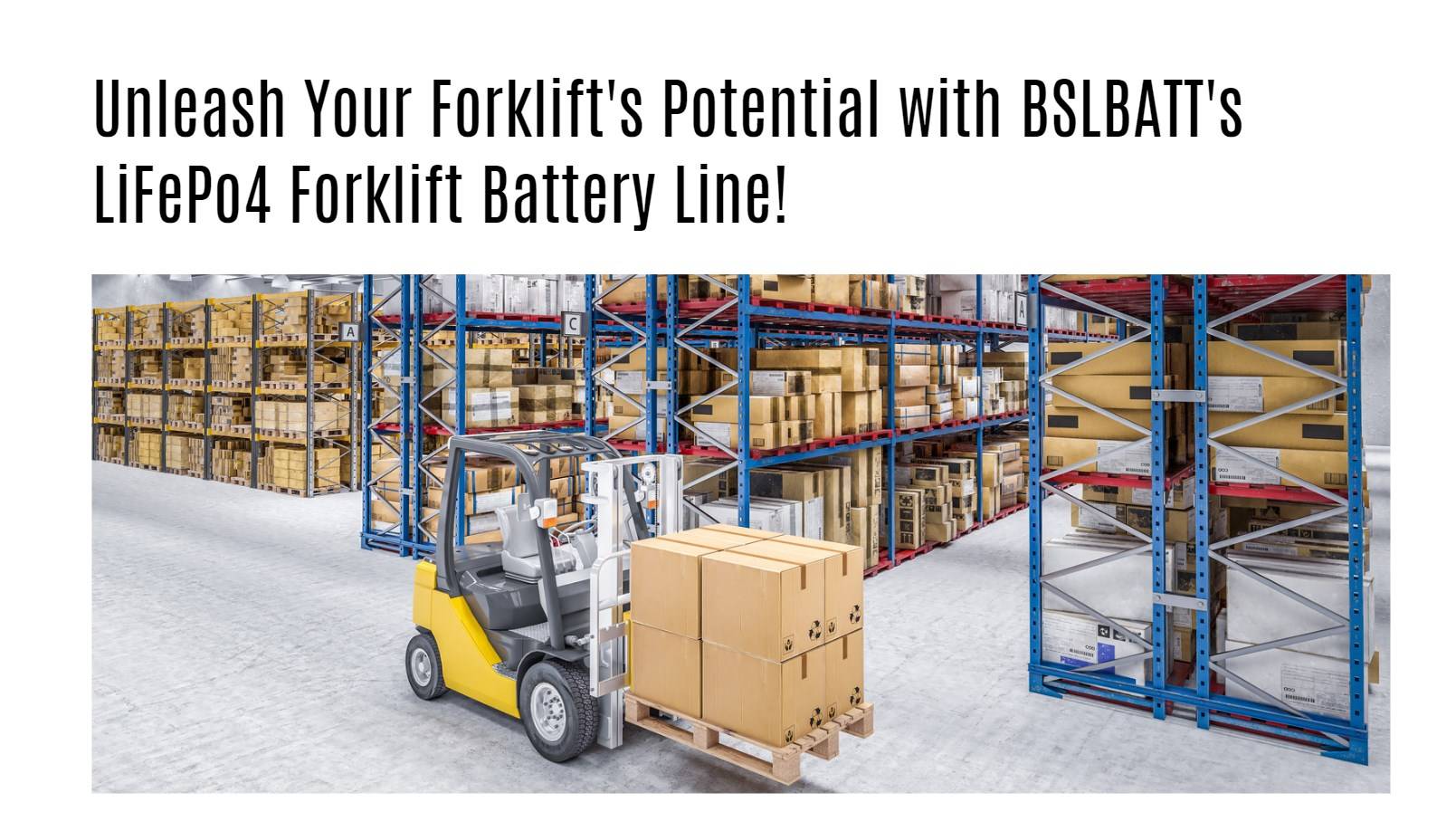In the realm of material handling and electric vehicles, selecting the optimal battery system for your forklift is crucial to enhancing operational efficiency and minimizing costs. Two primary types dominate the market: lithium-ion (Li-ion) batteries and lead-acid batteries. Each type presents distinct advantages and considerations, making the decision complex but pivotal for your fleet management strategy.
Assessing Your Power Requirements
Before delving into the specifics of battery types, it’s essential to assess your forklift’s power needs. This preliminary step involves estimating power consumption in watts and average daily usage hours. Such data-driven insights are instrumental in determining the appropriate battery capacity and configuration that align with your operational demands.
Understanding Battery Types
Lead-Acid Batteries
Lead-acid batteries, encompassing flooded lead-acid (FLA) and sealed lead-acid (SLA) variants, are renowned for their affordability and robustness. However, they come with trade-offs such as shorter lifespans, limited depth of discharge, and higher maintenance requirements. SLA batteries mitigate some maintenance challenges compared to FLA batteries but still necessitate periodic water level checks.
Lithium-Ion Batteries
In contrast, lithium-ion batteries offer superior performance metrics across various parameters. They boast higher energy density, longer lifespans (up to ten times that of lead-acid counterparts), and faster charging capabilities. Lithium-ion batteries are also lighter and occupy less space, contributing to enhanced maneuverability and operational flexibility. Importantly, they do not emit toxic fumes, making them safer for indoor environments and conducive to sustainable practices.
Variants of Lithium-Ion Batteries
Not all lithium-ion batteries are created equal. Variants like Lithium Cobalt Oxide (LCO), Lithium Nickel Manganese Cobalt Oxide (NMC), and Lithium Iron Phosphate (LiFePO4) exhibit differing characteristics in terms of energy efficiency, environmental impact, and safety profiles. Among these, LiFePO4 batteries stand out for their non-toxic nature and higher thermal stability, making them ideal for rigorous industrial applications.
Key Considerations in Battery Selection
Capacity
Battery capacity, measured in ampere-hours (Ah) or kilowatt-hours (kWh), directly influences operational endurance. It’s imperative to choose a battery system that not only meets your daily energy requirements but also accommodates occasional peak demands without compromising longevity.
Cycle Life
Cycle life denotes the number of charge-discharge cycles a battery can endure before its capacity diminishes significantly. Lithium-ion batteries excel in this regard, often surpassing 3,500 cycles, whereas lead-acid batteries typically range between 300 to 500 cycles. This longevity translates into reduced replacement costs and enhanced return on investment (ROI) over the battery’s lifespan.
Size and Compatibility
The physical dimensions, weight, and voltage specifications of batteries vary based on forklift models and operational contexts. Understanding these parameters ensures compatibility with your existing fleet and facilitates seamless integration without compromising performance or safety.
Charging Efficiency
Efficient charging capabilities are pivotal for optimizing operational uptime and productivity. Lithium-ion batteries excel in rapid charging, offering significant time savings compared to traditional lead-acid counterparts. Moreover, their ability to support opportunity charging—where batteries are charged during idle periods—further enhances operational flexibility and reduces downtime.
Maintenance Requirements
Maintenance considerations significantly impact operational costs and uptime. Lead-acid batteries necessitate regular maintenance tasks such as water level monitoring and corrosion management. In contrast, lithium-ion batteries are virtually maintenance-free due to their sealed design and inherent durability, thereby minimizing operational disruptions and labor costs.
Safety and Environmental Impact
Safety remains paramount in battery selection, particularly in environments where stringent safety protocols are mandated. Lithium-ion batteries, with their stable chemistry and absence of hazardous emissions, offer a safer alternative to lead-acid batteries, enhancing workplace safety and regulatory compliance.
Integrating Lithium-Ion Technology
Modern forklift designs increasingly integrate advanced lithium-ion battery technology to maximize operational efficiency and sustainability. Brands like BSLBATT offer tailored lithium-ion solutions compatible with leading forklift models from manufacturers such as Toyota, Hyster & Yale, and Combilift. These solutions not only reduce carbon emissions and fuel consumption but also mitigate maintenance costs associated with traditional internal combustion engine (ICE) equivalents.
Conclusion
In conclusion, the choice between lead-acid and lithium-ion batteries hinges on a thorough assessment of operational requirements, lifecycle costs, and environmental considerations. While lead-acid batteries offer initial cost advantages, lithium-ion batteries emerge as the superior long-term investment, delivering unparalleled performance, efficiency, and sustainability benefits. By prioritizing these factors and leveraging advanced lithium-ion technologies, businesses can optimize their material handling operations and achieve sustained competitive advantage in the evolving industrial landscape.
For expert guidance on selecting the optimal battery system tailored to your forklift fleet’s needs, consult with our knowledgeable team of engineers. Contact us today to embark on a transformative journey towards enhanced efficiency, reduced operational costs, and greener logistics solutions.




